Impressions of Hobart – Better Days Ahead?
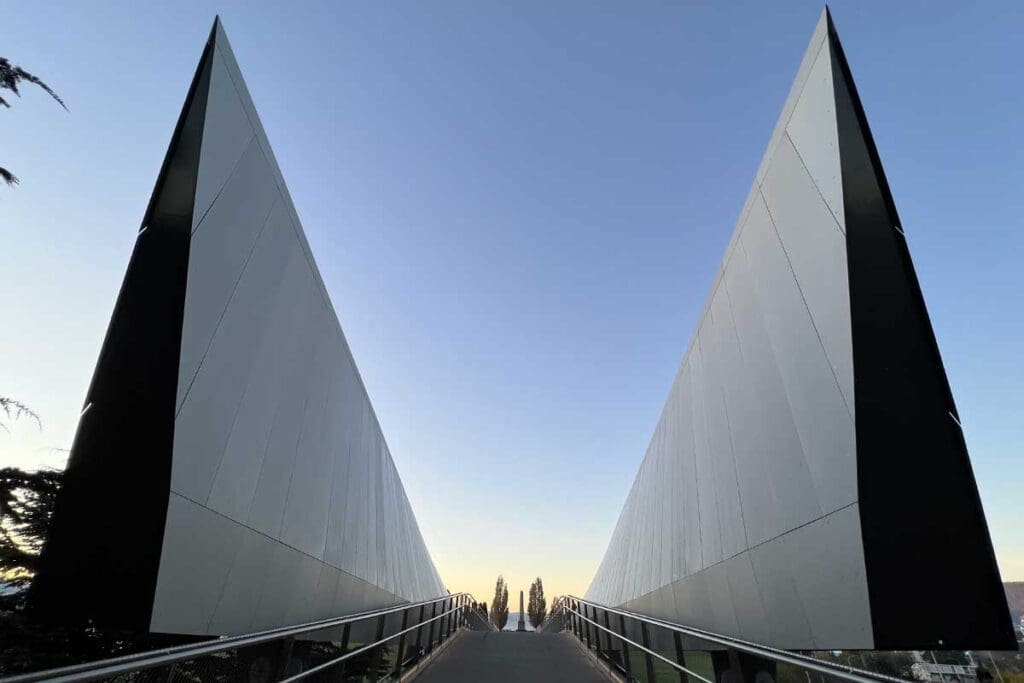
Hobart, Tasmania
During May I had a rare opportunity to spend two days in Hobart. This was my first visit in several years and I was able to see the latest cycling infrastructure developments, as well have off-the-record meetings with key stakeholders across the government and private sectors.
It was certainly cold during my visit! The winter average maximum temperature is under 13 degrees and even in summer the average maximum is only in the low 20s. But Hobart is also surprisingly one of our drier capital cities, with just 565 mm of annual rainfall, that’s spread fairly evenly throughout the year. So overall, it’s a favourable climate for cycling.
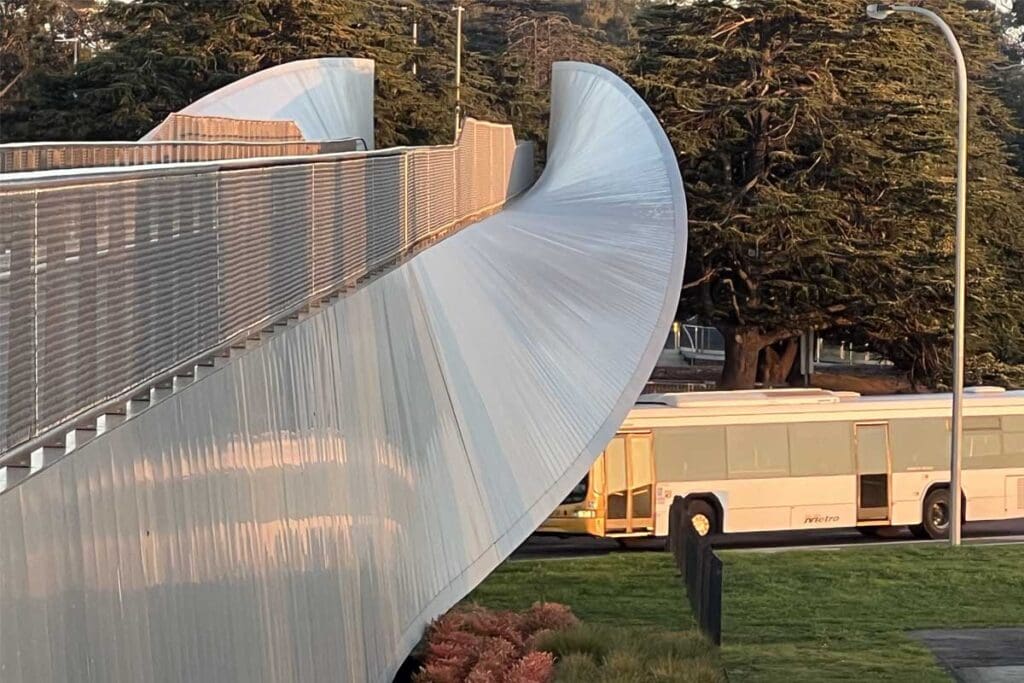
Not So Sleepy
Like many mainlanders, most of my visits to Tasmania over the years have been as a tourist. It’s easy to get the impression that Tasmania in general is a sleepy backwater where nothing much changes.
But the reality is completely different. The population of Hobart is growing faster than many other parts of Australia – from just 171,000 in 2011 to 247,068 at the 2021 census, to an estimated 253,241 this year. That still makes it the second smallest capital in Australia, only exceeding Darwin, which is also the only other capital city with no light or heavy rail public transport system at all.
Hobart once had a suburban train line and eight tram lines, but like most Australian cities, they were all replaced in the post-World War II era to make more room for shiny new Kingswoods and Falcons.
It’s not just Hobart’s population that’s growing rapidly. The per-capita income has also been rising fast. In today’s post-Covid world, many professionals have opted to keep their big city jobs but still make a tree change to Tasmania. In previous years, they had to choose between one or the other.
Hobart’s also geographically constrained along the banks of the Derwent River, with mountains on both sides, most famously, Mount Wellington.
Add to this resurgent tourism sucking up housing for Airbnb and all of these factors have combined to make housing in extreme short supply throughout Hobart, with prices for both purchase and rental going through the roof. There is hardly any medium or high-density housing, but this will surely change in the coming years. This is especially likely within the compact CBD, which has hardly any apartment buildings either existing or under construction, in stark contrast to Australia’s east coast capitals in particular.
Years of Lost Opportunity
Hobart lags behind even the low standard of other Australian cities when it comes to cycling infrastructure. Tasmania in general has always been towards the bottom of the league table when it comes to cycling infrastructure spend per capita.
Hopefully things are starting to change. In 2022/23, the City of Hobart is spending $1.8 million of its transportation budget on cycling infrastructure, compared to $23.1 million on roads and footpaths. These figures are small, but the City of Hobart only covers the CBD and inner suburbs. It’s only one of five local governments that comprise the greater Hobart urban area.
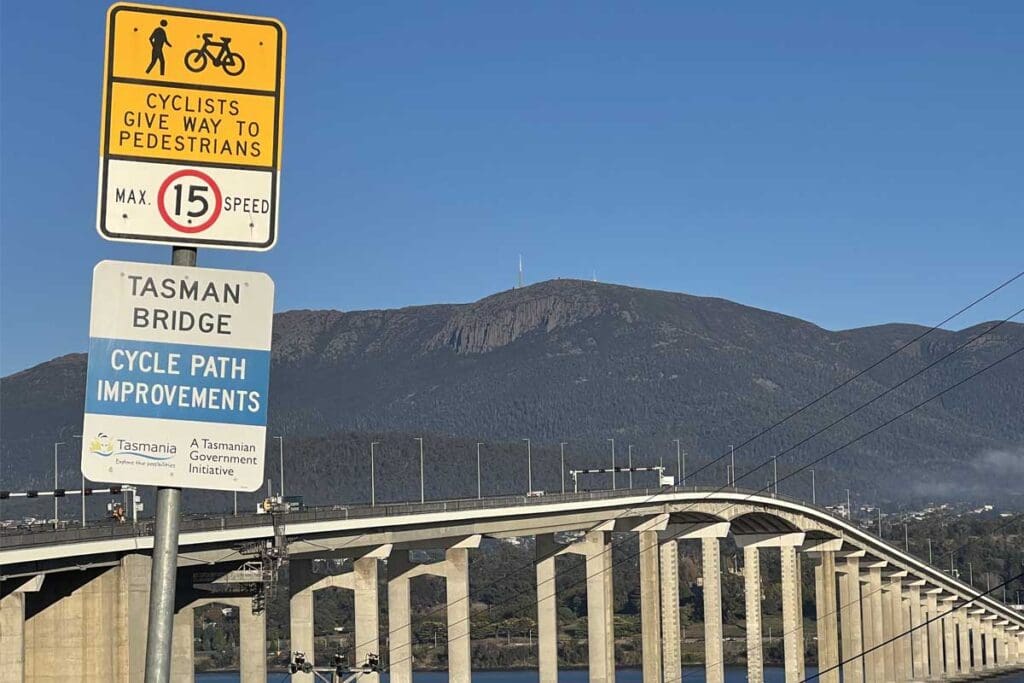
Another Bridge Saga
Just like my recent article about Auckland, NZ, there’s a critical bridge that takes centre stage in this story.
About three quarters of Hobart’s population lives on the city side (west bank) of the Derwent River, which by the time it reaches Hobart is a wide, deep ocean estuary. The other quarter live on the east bank. The critical bridge joining the two, the famous Tasman Bridge, was opened in 1964.
Originally it had four motor vehicle lanes and two shared paths for walking and cycling immediately adjacent.
Then in 1975, the cargo ship Lake Illawarra steered off course when it was supposed to be making a routine passage beneath the wider central span. It crashed into the bridge, which partially collapsed, killing seven crew members and five motorists who were driving over the bridge at that critical moment.
When the bridge was rebuilt it was ‘upgraded’ … (an ironic term still used frequently today to any road where vehicle capacity is increased at the expense of anything else) to five lanes by eliminating the shared paths.
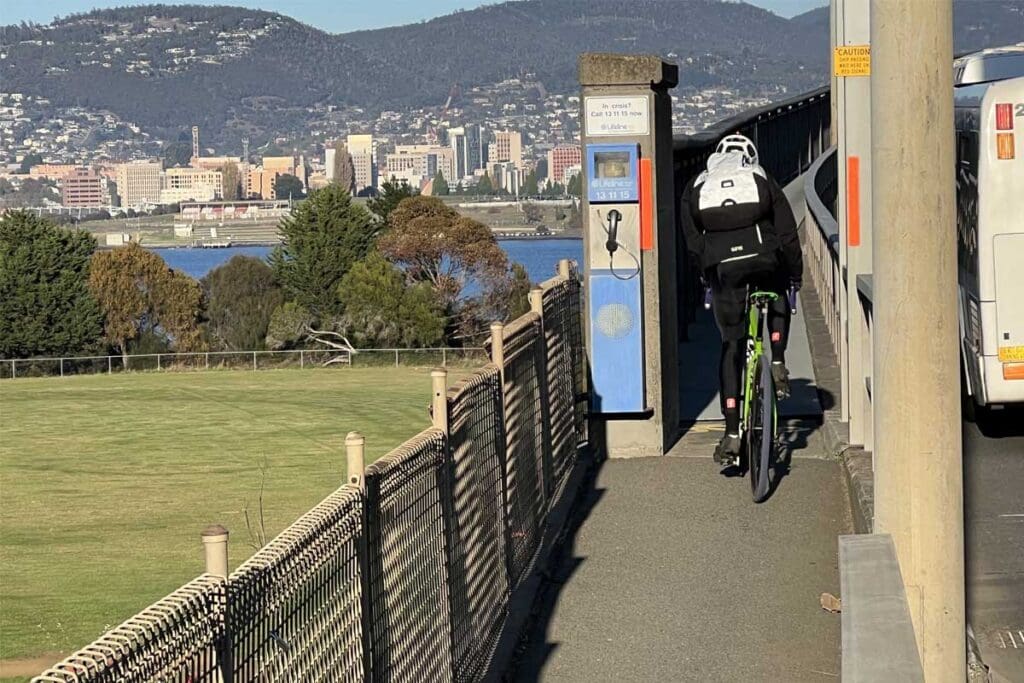
Cyclists and pedestrians were relegated to raised service gantries at the extreme edges of the bridge that were never intended for public access. These are so narrow, some bicycles with wider handlebars can’t even fit through at all. Most cargo bikes would also struggle to fit. Even alert cyclists often crash into the barricades, especially as the very high bridge is exposed to strong winds and has quite steep uphill and downhill gradients.
Every time a cyclist meets a pedestrian or another cyclist travelling in the opposite direction, they both have to stop and literally squeeze past each other.
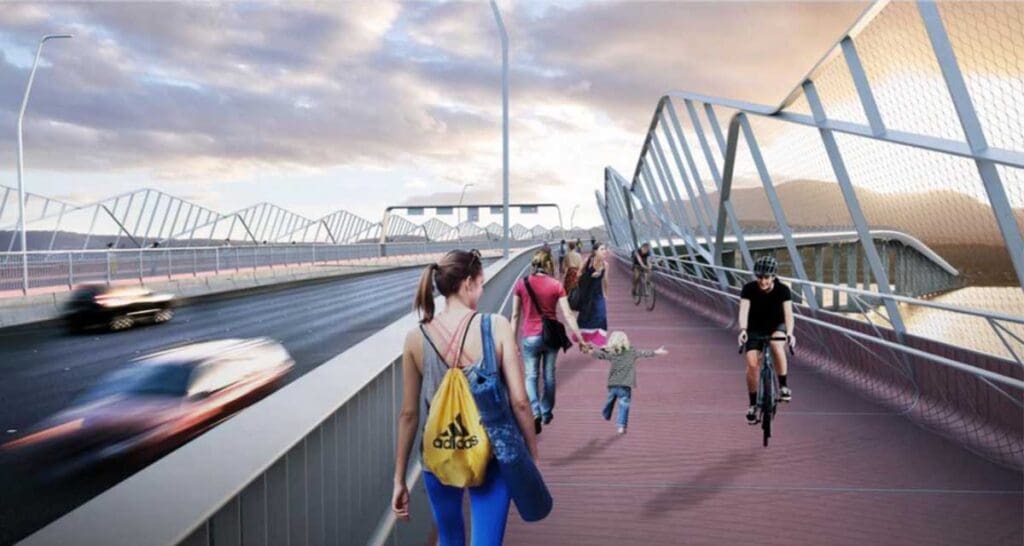
Fortunately, two new shared paths, each 3.5 metres wide have been approved and funded, with work due to begin in September 2023 and to be completed in late 2025. This is part of a $130 million bridge upgrade project that will also include structural strengthening, new lighting and other improvements.
This has been described as a ‘game changer’, because cycling and walking numbers across the bridge are already high despite the current hazardous facilities. It’s only two kilometres from the western end of the bridge to the heart of Hobart’s CBD, so most of the 65,000 residents on the eastern shore live well within cycling commuting range once they have a decent connection.
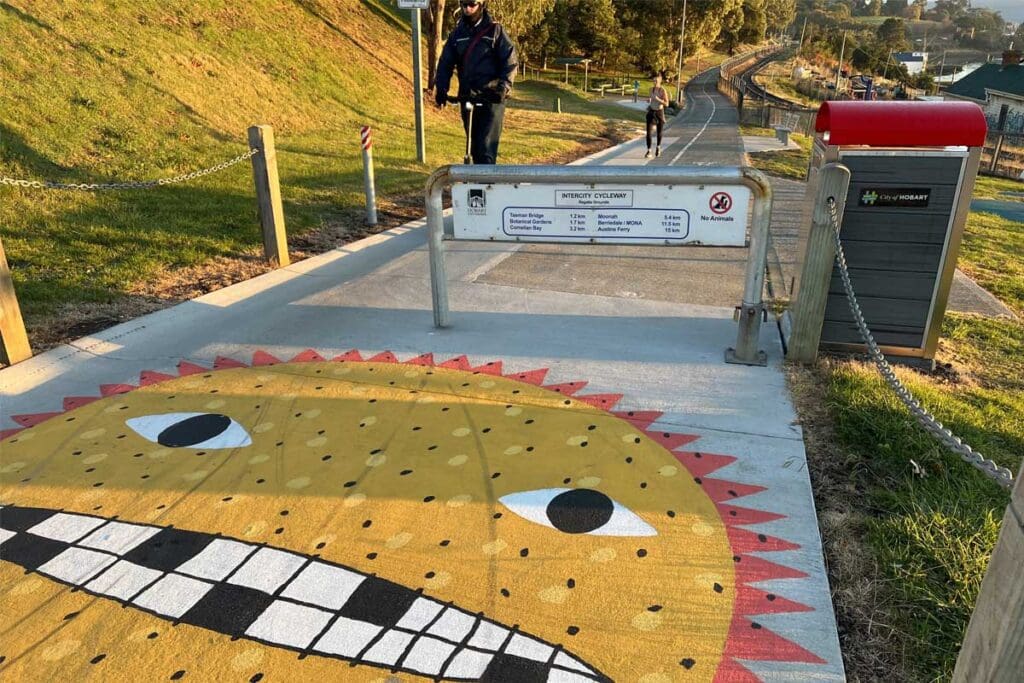
What Else is Good?
Hobart has made good use of its abandoned rail line that once linked the city centre to all points north and was used for both goods and passenger trains. It currently hosts the Intercity Cycleway, which is both the longest and most important commuter cycling route in Hobart.
As part of the mainly federally funded Hobart City Deal, which totals about $1.8 billion in long-term funding, this former rail corridor will also host a busway, running alongside the cycle path, provided plans turn into reality.
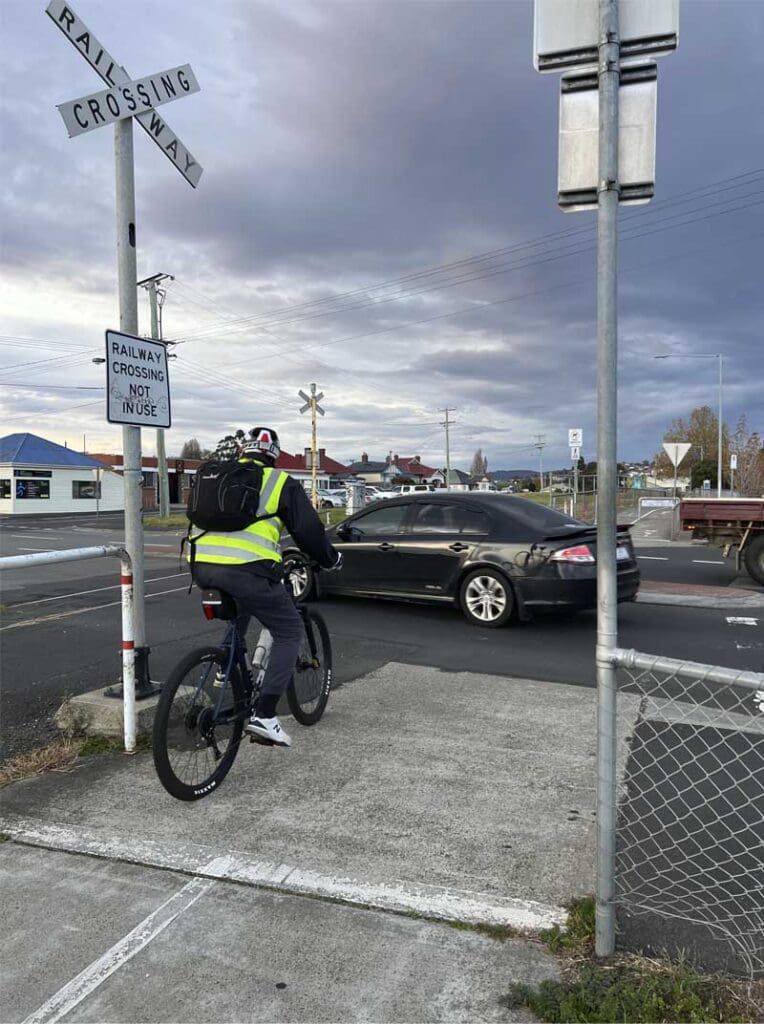
Hopefully this busway will also be a catalyst for upgrades to unnecessarily dangerous crossings of busy roads, which currently diminish the use of the Intercity Cycleway by children, families and any other more cautious riders.
One nice feature is COMA, the Corridor of Modern Art, a locally funded project with many artworks by prominent local artists commissioned along the cycleway route between the city and the famous MONA (Museum of Old and New Art) gallery.
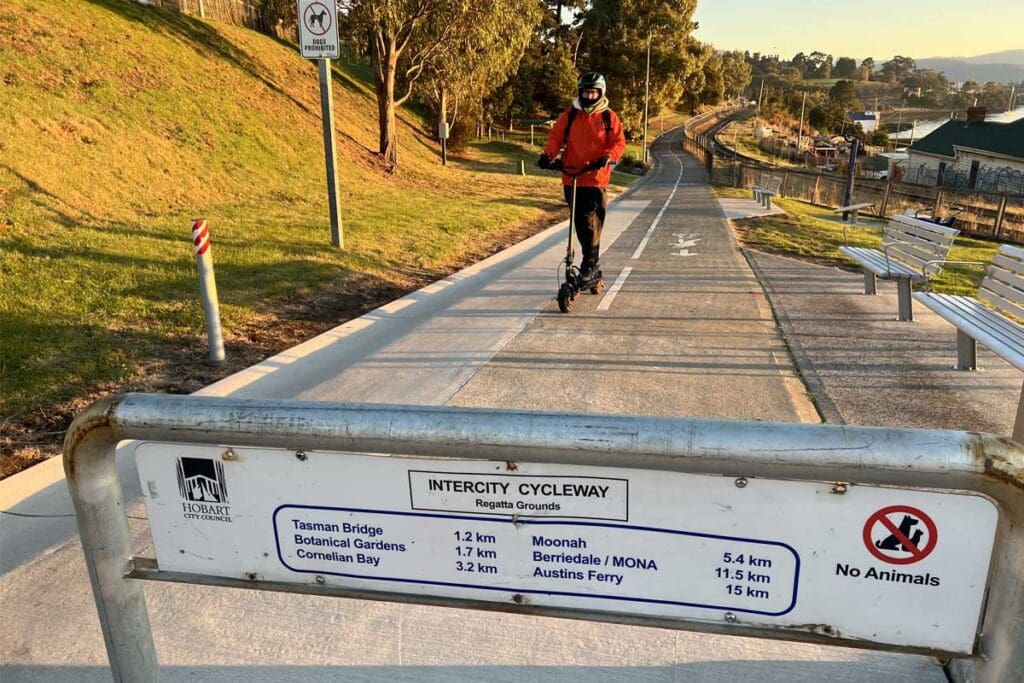
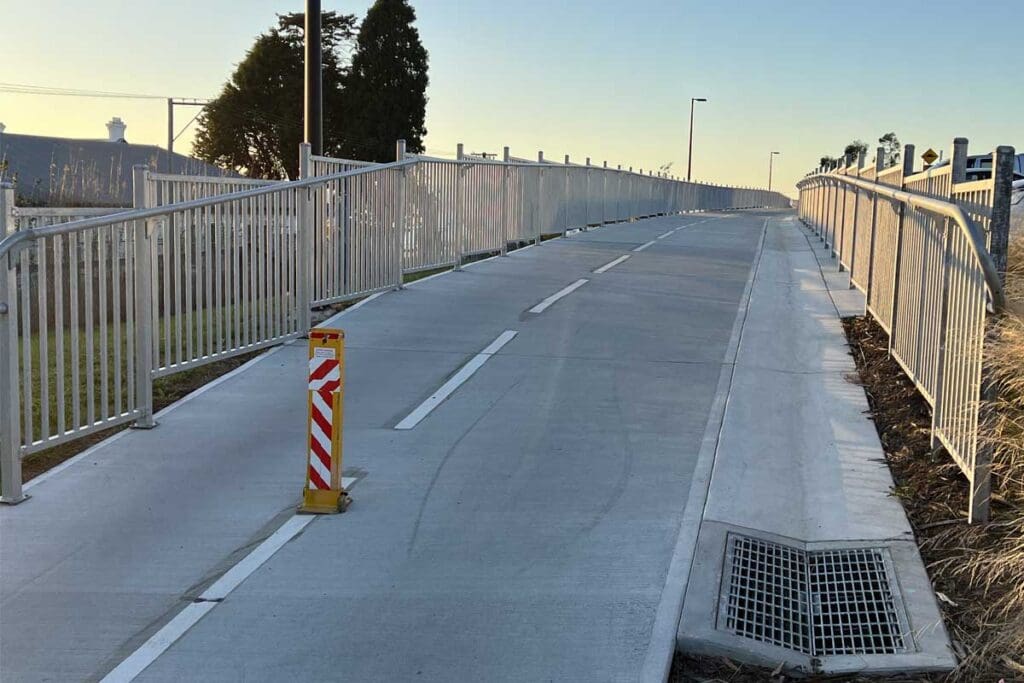
Just near the Intercity Cycleway’s city rail corridor entrance is the stunning Bridge of Remembrance, a pedestrian and cycleway bridge across the busy Tasman Highway, which is seven lanes wide at that point. It’s certainly a good idea to have a bridge across that road, but the connections at either end of this bridge could be greatly improved to enhance its value and level of use.
Another offshoot of the Hobart City Deal is a new River Derwent ferry service, which runs between the CBD and Bellerive and has capacity for 15 bikes. Initially it was free to travel if you had a bike or e-scooter and the service has been extremely popular, with over 110,000 trips in the first year. Now the fare is only $3.50 per adult, with no extra charge for bikes or scooters, and tickets integrate with the bus services at either end. The service is now being expanded, with funding for additional terminals to connect other suburbs.
In another positive for cycling, a new bridge is under construction across the Derwent at Bridgwater, 22km north of Hobart’s CBD. This is the busy main road linking Hobart to Launceston and all other points north. The existing 75-year-old bridge is extremely narrow and carries many heavy trucks, with virtually no provision for cycling and walking. The new bridge will include a three-metre-wide shared path that will extend to the suburbs on either side.
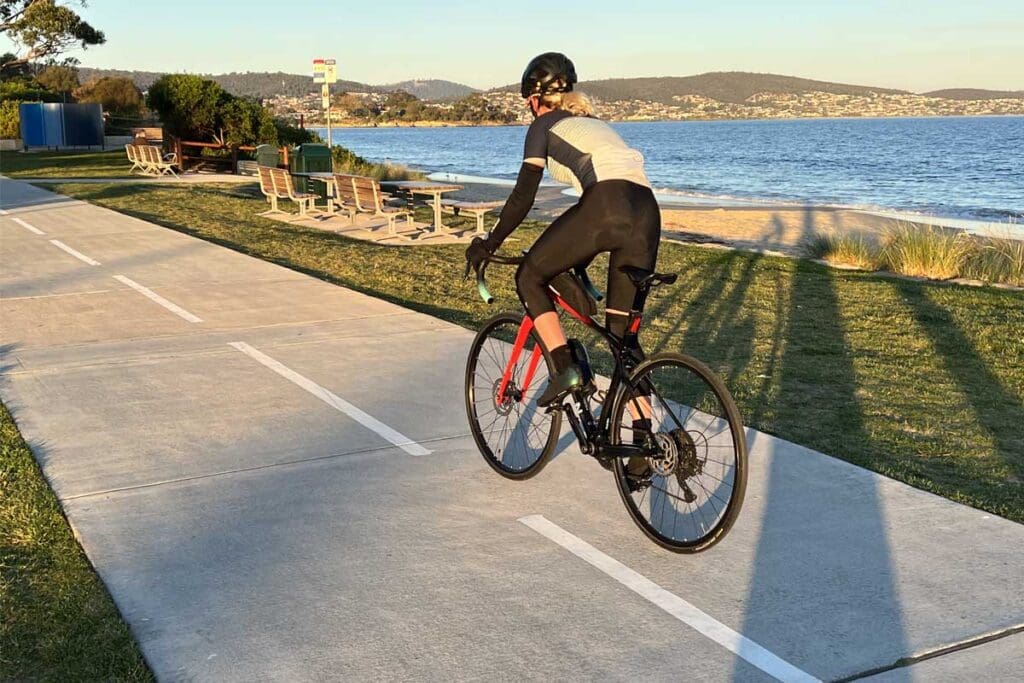
On the east side of the Derwent, the only substantial path is the scenic Clarence Foreshore Trail, which hugs the waterfront for 15.1km. Most of this is quite winding and more for recreation, but some stretches are also popular with commuters.
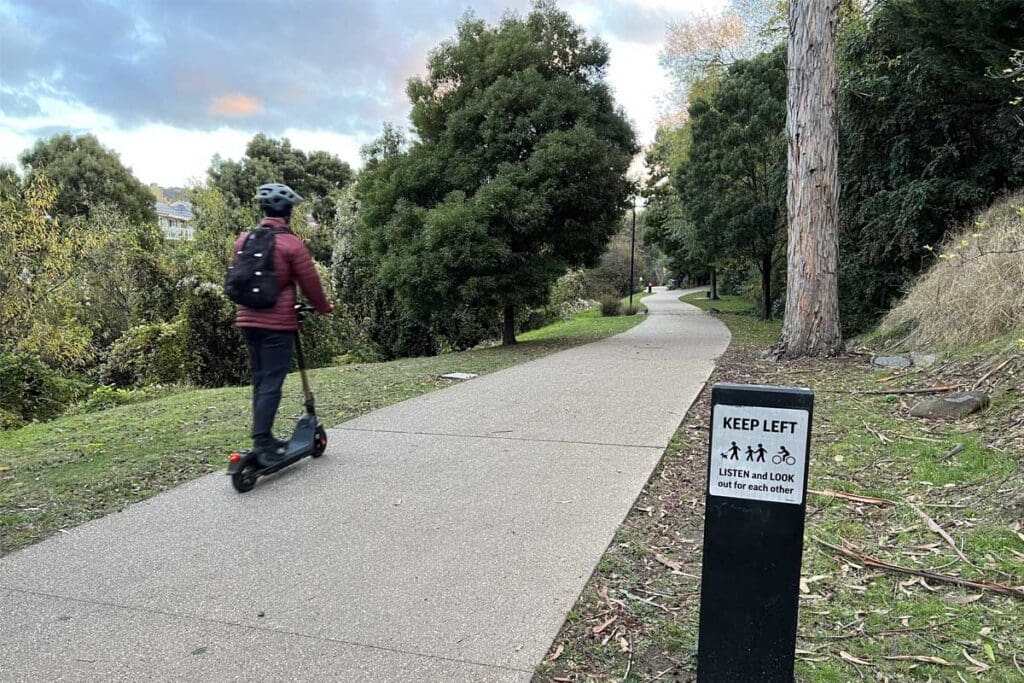
Far shorter, but demonstrating how valuable good infrastructure can be, is the Hobart Rivulet path that links the inner western suburbs to the CBD. It’s also a tourist trail, passing the historic Cascade Brewery and the world heritage-listed Cascades Female Factory.
Rather than having to negotiate hilly, very busy roads, this path allows cyclists and pedestrians to travel through a quiet linear park along gentle gradients. One bike shop owner commented that this path was the key motivation for multiple customers who live in this area deciding to buy e-bikes.
Of course, no summary of Hobart, and Tasmania more generally, would be complete without mentioning its boom in mountain bike parks and mountain bike riding. Maydena is the most famous privately-owned mountain bike park, just over an hour northwest of Hobart. But there are many other public parks and trails closer to both sides of the city, including the Clarence MTB Park on the east side, that has significant upgrades either just opened or coming soon.
What’s Not So Good?
As we reported here, Hobart reduced most of its city centre streets to 40 kilometres per hour in 2021 and has since reduced a small portion to 30kmh. That’s great, but there’s precious little cycling infrastructure within the CBD itself and its network of one-way streets speed up traffic flow and facilitate cars over bikes. Two-way streets are more cycle friendly, or at least adding ‘contra flow’ lanes so that only micromobiltiy users can travel in both directions.
With a few exceptions, there’s also a distinct shortage of street trees, footpath widening, parklets and other progressive amenities. It’s like stepping back to the Melbourne CBD of 30 years ago. There has been approval for a ‘paint on road and plastic bollards’ buffered bike lane facility along Campbell Street, on the western edge of the CBD grid, but according to one advocate the city has dithered for three years on finalising the design and this project is still in consultation phase.
Once you get out into the suburbs, there are virtually no cycling facilities and with almost all travel being done by private car, despite its relatively low population, Hobart’s road are busy.
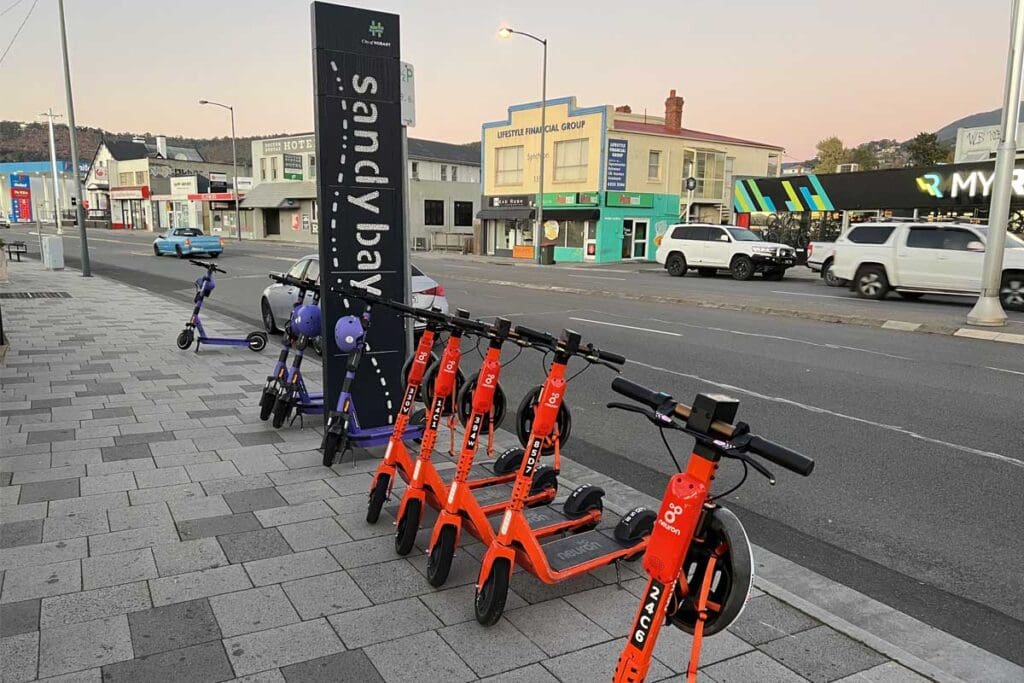
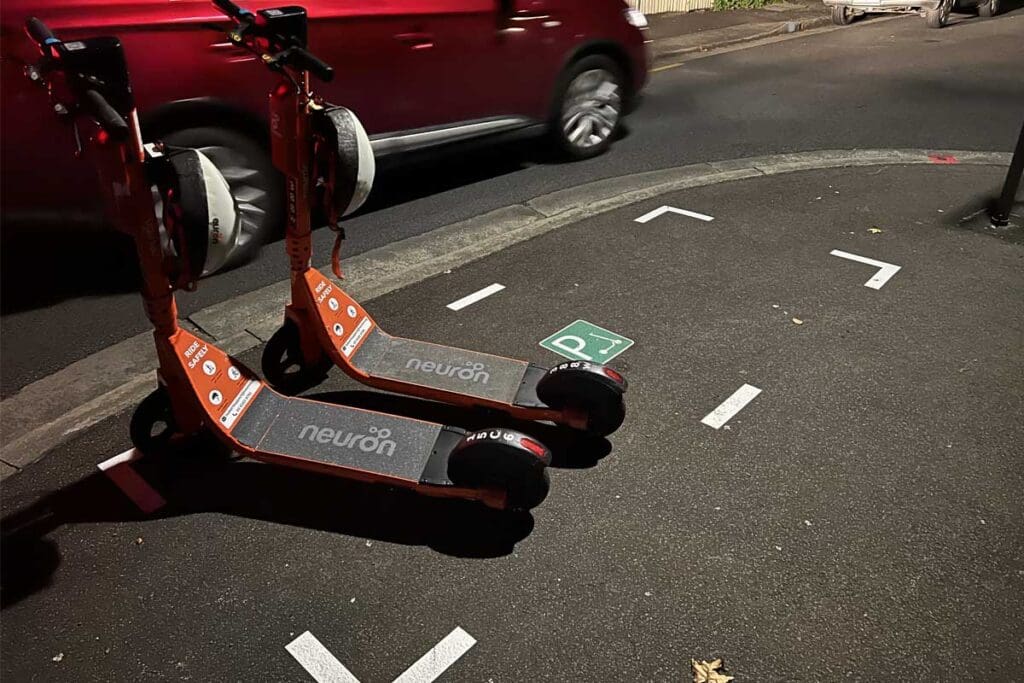
Better Days Ahead?
Fortunately, there are green shoots of better things to come in Hobart. E-Scooters have certainly had a major impact, both the two shared schemes and private ownership, which is legal in Tasmania. As we reported here, the initial scooter share trial was deemed successful, with more than 600,000 rides, and the trial will roll into longer-term contracts from 23rd June 2023 onwards.
Hobart’s hilly terrain, which has previously deterred many potential cyclists, is ideal for e-bikes, which are selling in big numbers.
There are newly created key positions within State and local governments that are specifically responsible for cycling, active transportation and urban renewal. These positions have been filled by people with progressive ideas and good ability, so hopefully positive outcomes will flow over time.
There are certainly headwinds in this most politically conservative of Australia’s States. Hobart has a long way to go to catch up with most other Australian capital cities when it comes to cycling infrastructure and, at current spending rates, it’s actually falling further behind. But with the significant upgrades I’ve outlined already in the pipeline and hopefully more to come, there’s no reason why Hobart cannot one day genuinely claim to be a cycling and micromobility friendly city.
Join the conversation
Do you think Hobart is on the cusp of becoming a more active transport-friendly city?

cant wait for the Tasman Bridge widening after I had a recent prang with one of the infamous gantries; used to ride regularly over the Bridgewater bridge but not in the last 9 months with no provision for cyclists during the upgrade